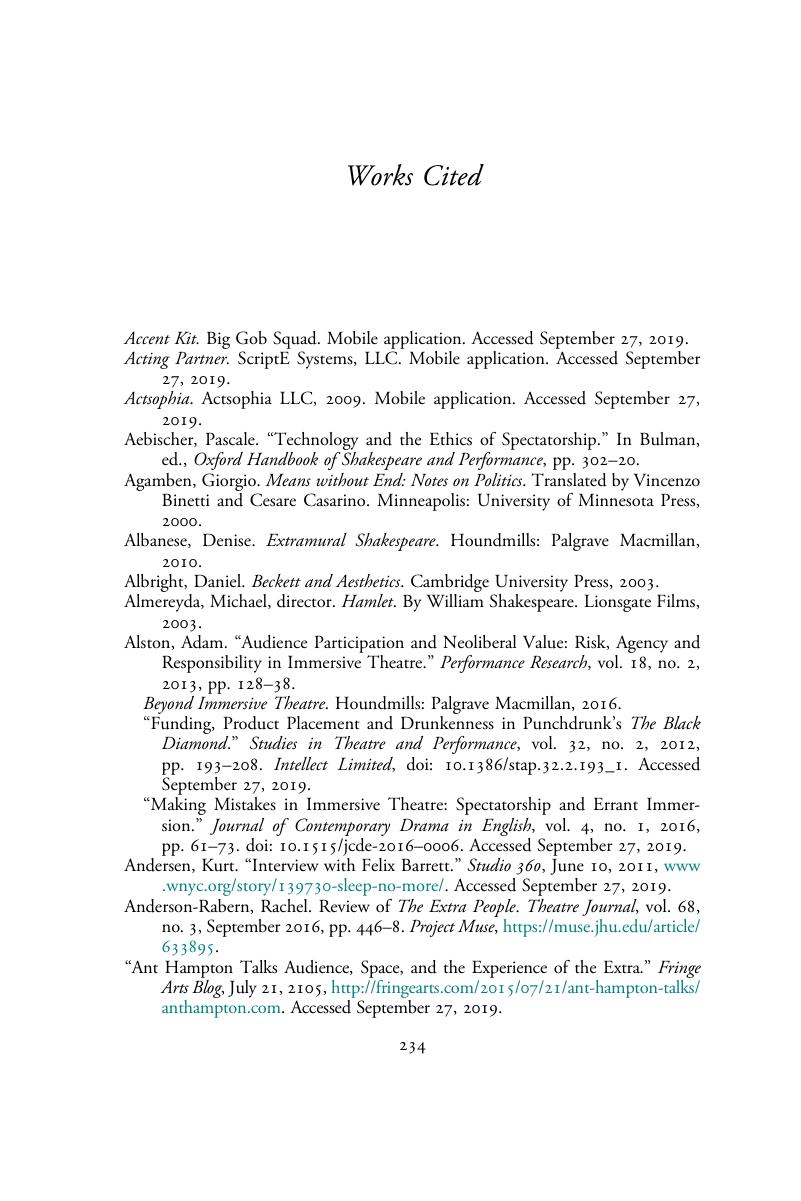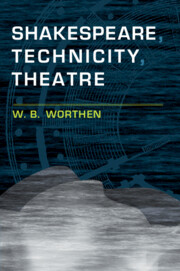Book contents
- Shakespeare, Technicity, Theatre
- Shakespeare, Technicity, Theatre
- Copyright page
- Contents
- Illustrations
- Acknowledgments
- Chapter 1 Introduction: Theatre, Medium, Technology
- Chapter 2 The Face, the Mask, the Screen: Acting and the Technologies of the Other
- Chapter 3 Shax the App
- Chapter 4 Interactive Remediation: Original Practices
- Chapter 5 Designing the Spectator
- Chapter 6 And Or And Not: Recoding Theatre
- Notes
- Works Cited
- Index
- References
Works Cited
Published online by Cambridge University Press: 22 May 2020
- Shakespeare, Technicity, Theatre
- Shakespeare, Technicity, Theatre
- Copyright page
- Contents
- Illustrations
- Acknowledgments
- Chapter 1 Introduction: Theatre, Medium, Technology
- Chapter 2 The Face, the Mask, the Screen: Acting and the Technologies of the Other
- Chapter 3 Shax the App
- Chapter 4 Interactive Remediation: Original Practices
- Chapter 5 Designing the Spectator
- Chapter 6 And Or And Not: Recoding Theatre
- Notes
- Works Cited
- Index
- References
Summary

- Type
- Chapter
- Information
- Shakespeare, Technicity, Theatre , pp. 234 - 259Publisher: Cambridge University PressPrint publication year: 2020



